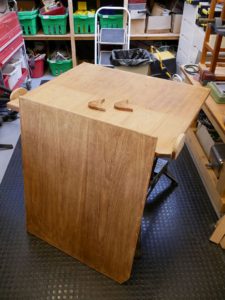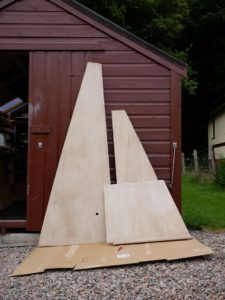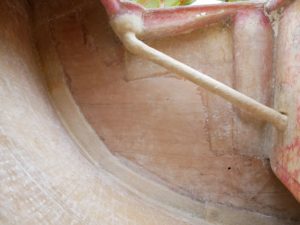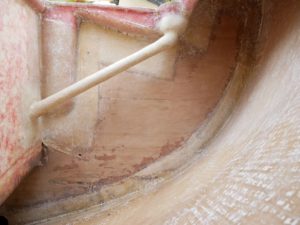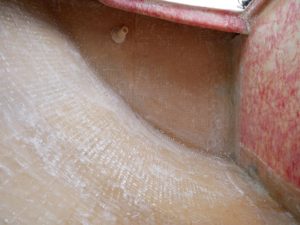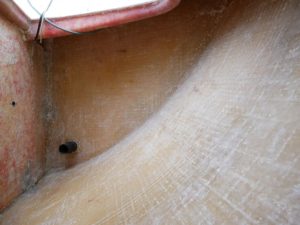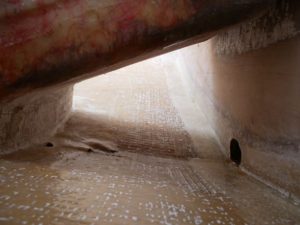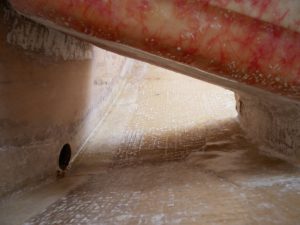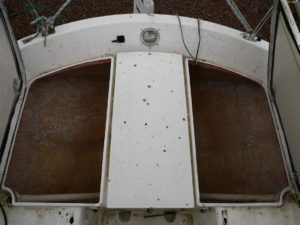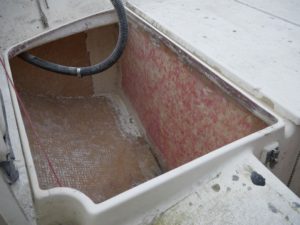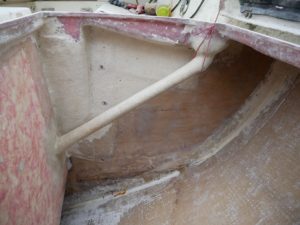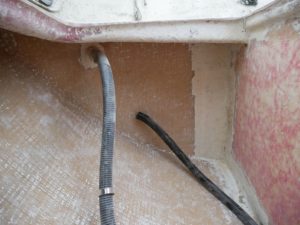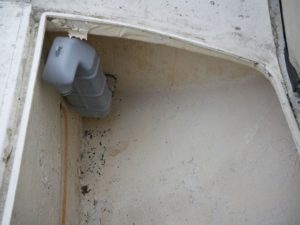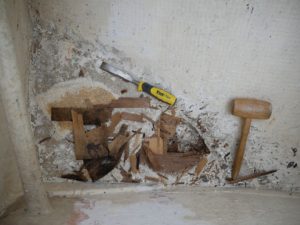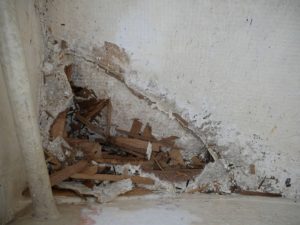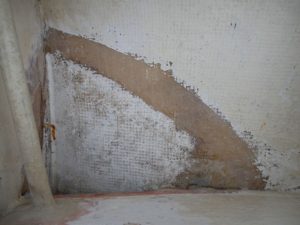Having got about as far I can with on-boat work till I can check everything with Twig, I’ve been turning my attention to some of the removable pieces stored in my workshop. So now reporting progress with the chart table and forecabin bunk boards, and it does feel like the pieces of the jigsaw are starting to come together even if there are plenty more (battery box, heads door, pilot berth sections, saloon floor, headlining panels etc.) still to ‘fit’.
When we tested the folding chart table (first photo) for fit between original main bulkhead and replacement nav. station bulkhead, we discovered that it had never sat right. It folded up parallel with both, but folded down (to use) so far out of parallel with the main bulkhead that Twig couldn’t stand it any more than me! But we couldn’t rehang it straight with the existing lugs because the boat geometry just didn’t allow it, so had to drill a new pivot hole in the main bulkhead and adjust the pivot points on the chart table lugs. Now it folds up straight and folds down straight, but it took the best part of an afternoon months back to get this right, and I’ve just caught up on the associated lug surgery (see the two pieces I’ve cut off) and varnish stripping. We’ve also discussed adding fiddles to the lid and fixing a teak strip to the main bulkhead to support the forward end of the table when it’s down so it can hang on one (aft) cord instead of two, and I’ll need to replace the horrid little hooks and eyes that held the chart table shut after having to file the heads off almost slotless steel screws to get the catches off for varnish preparation.
I wasn’t planning to strip the forecabin bunk tops (second photo) back to bare wood, but the paintwork was in such poor condition over large areas that it quickly became a no-brainer. I’d already got the smallest one sanded (retaining much of the paint) for repainting before the middle one changed my mind, but it really wasn’t a lot more effort to strip them all completely despite finishing off three old nylon flap brushes and two-and-a-half new ones in a mere six hours or so! So now considering varnishing or resin-coating instead of repainting because (while not perfect) I think they’ve come up well enough for either.
In other news, the new hose for the pressure washer came yesterday and I’d better order some more flap brushes for jobs yet to be done. I’ve also gone through c.40 dust masks in 13 months (so c.40 days of paint or varnish stripping) and am well on the way to killing a third 240V drill with last summer seeing off both my old Black & Decker and the locally-bought Einhell (all I could get) that lasted just days, and the bearings on their basic Makita replacement undoubtedly the worse for wear now after so much work since. Hopefully that one will see out any remaining stripping jobs, but I guess they’re just not designed for constant sideways pressure!










